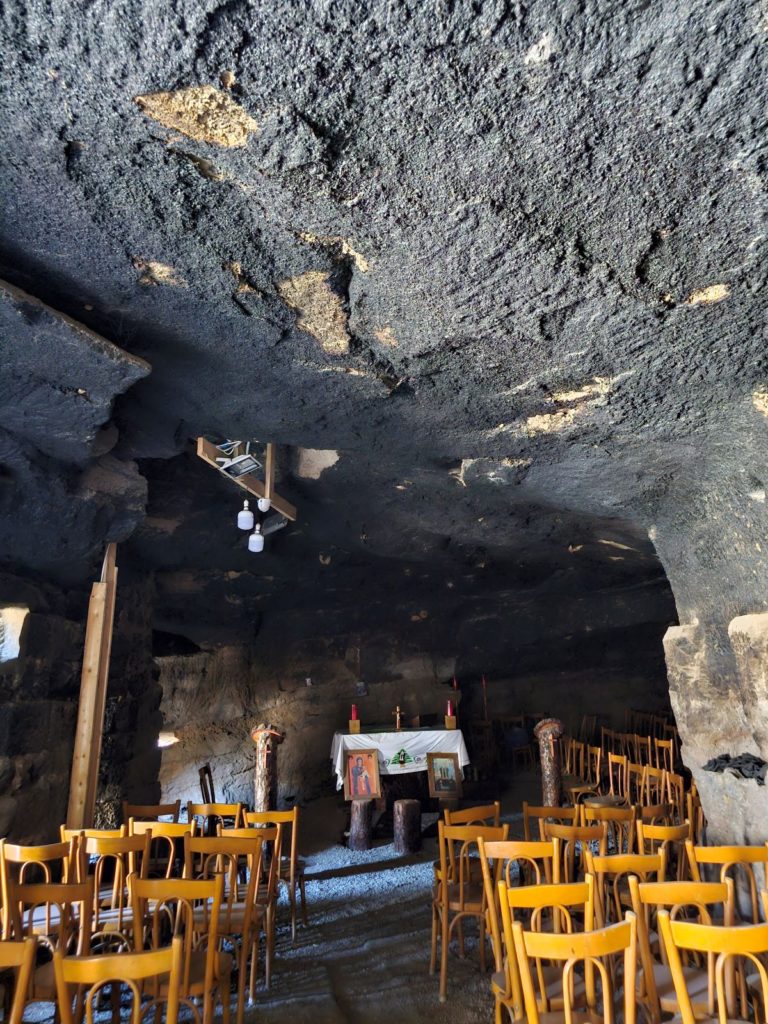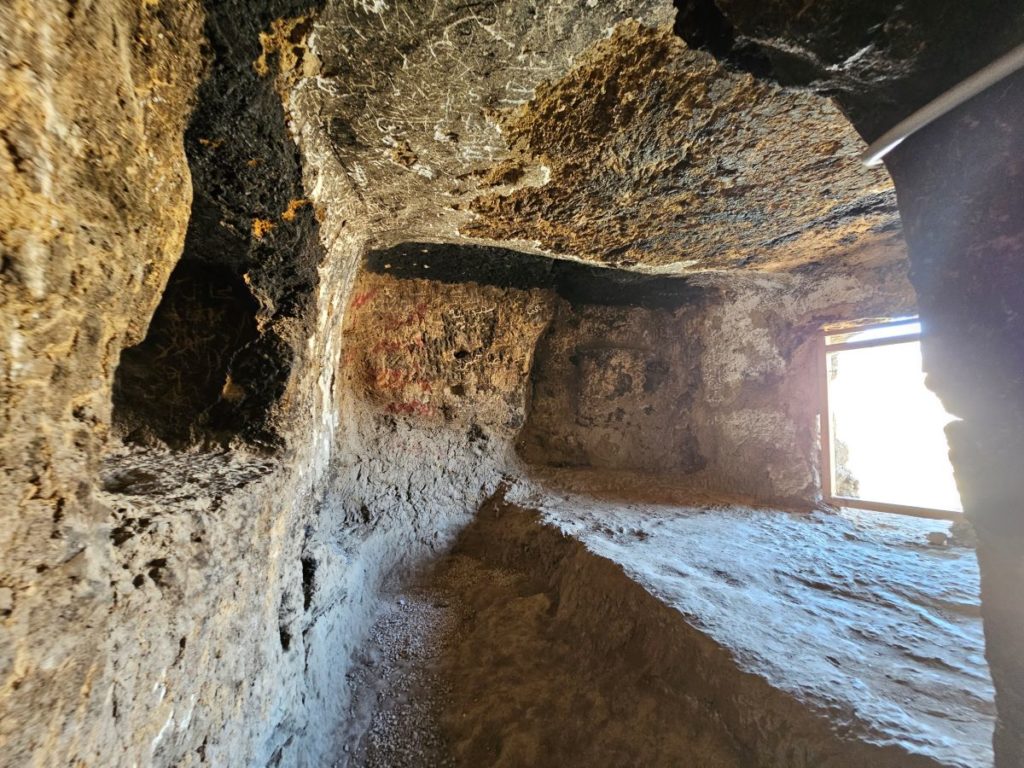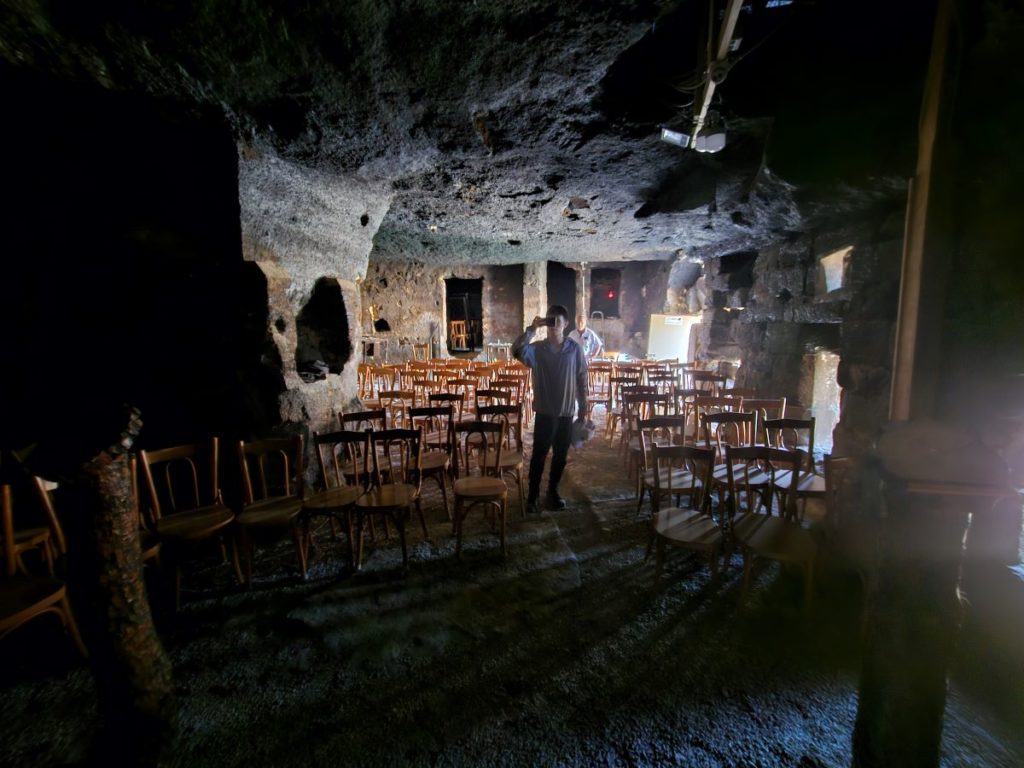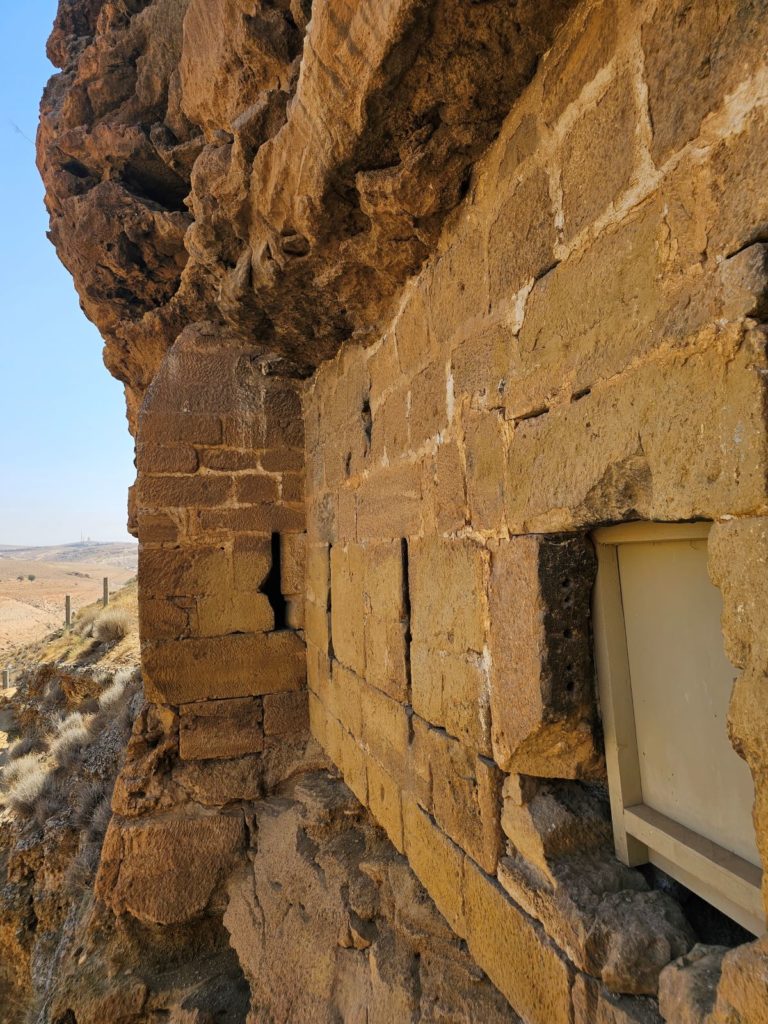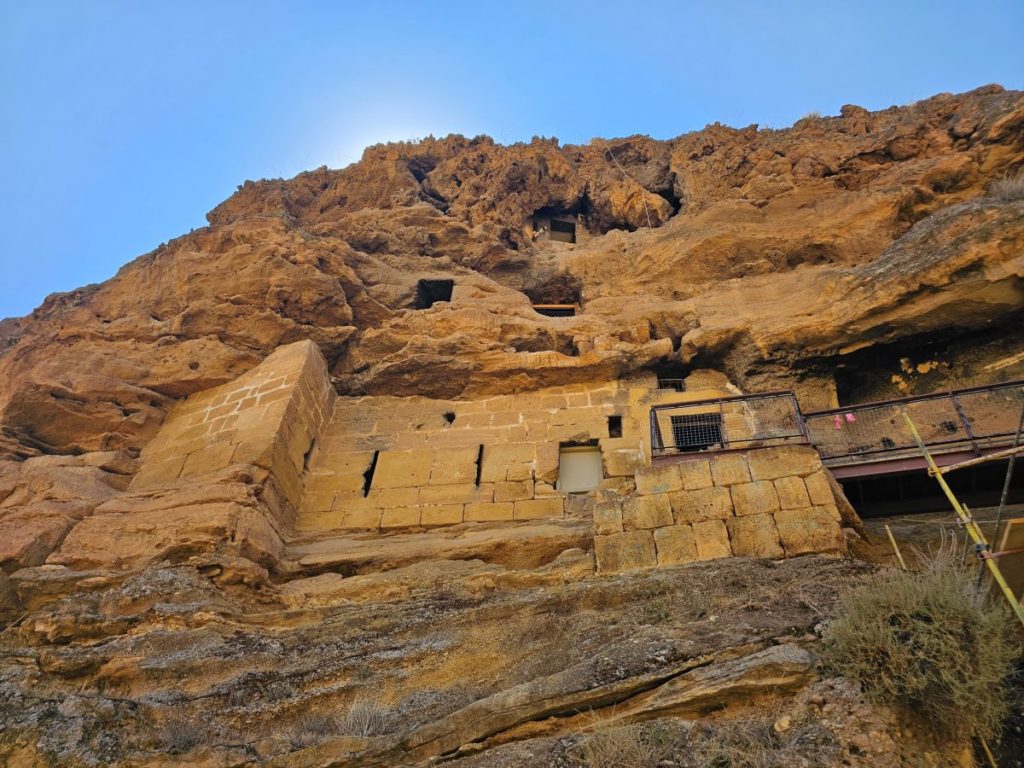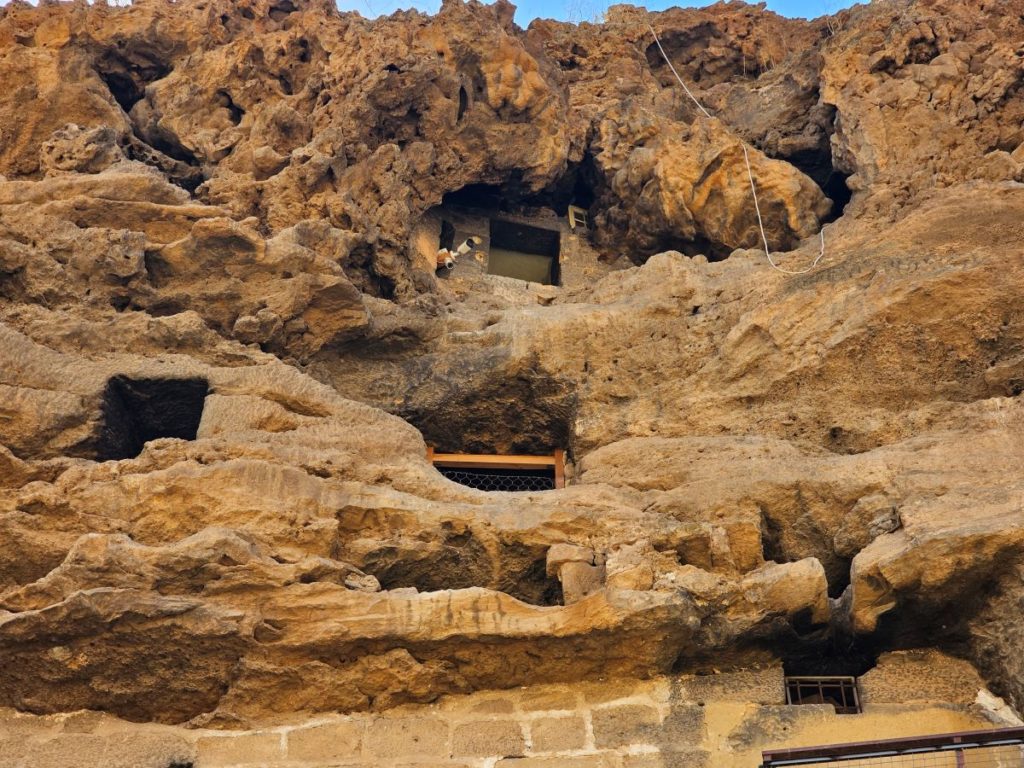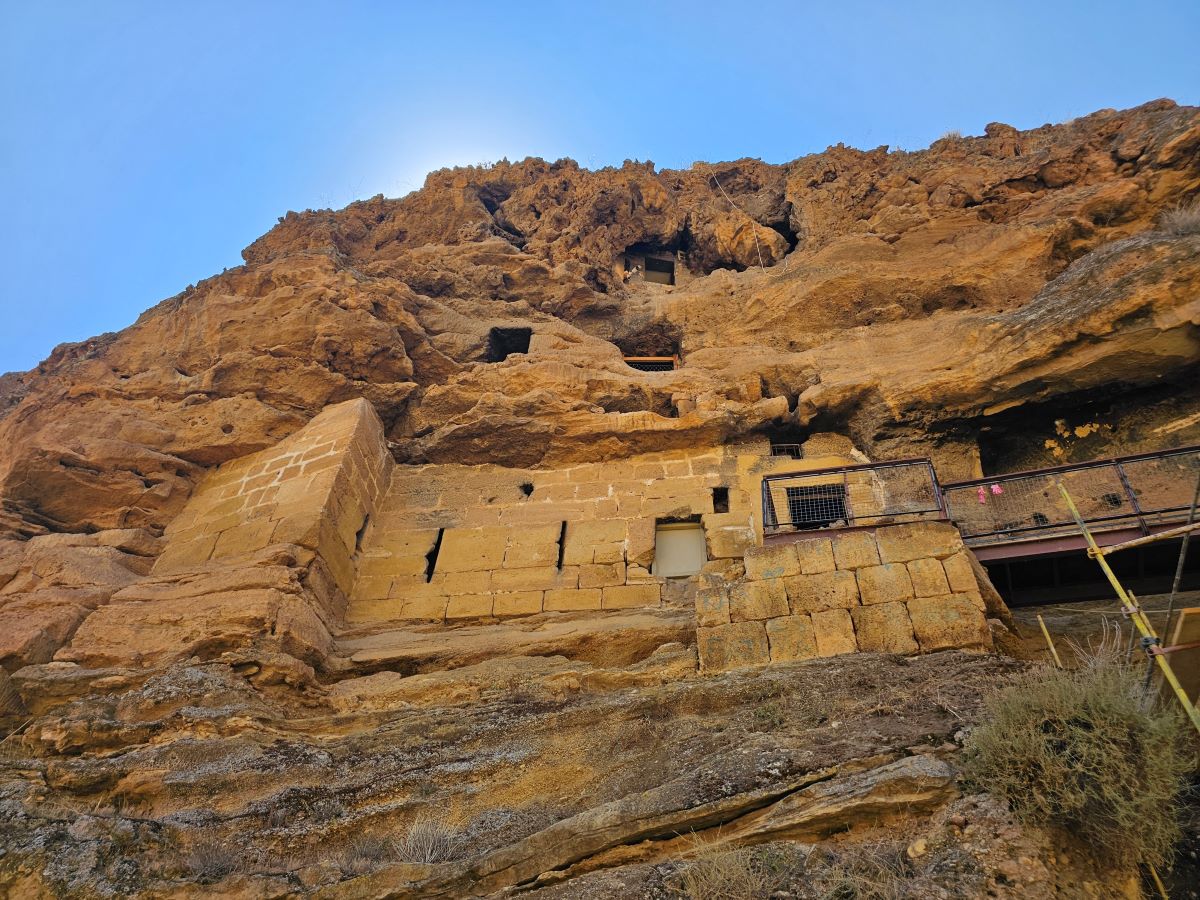El Hermel features a Crusader era cave carved into the rock, overlooking Ain-El Zaraa water source that connects with the Assi river.
Background
The cave was established during the Crusader period, and was originally known as “Cavea de Memboa” in a 12th-century Frankish charter. In 1181, Raymond III, Count of Tripoli, donated it to the Order of the Hospitallers of Saint-John of Jerusalem. This cave served as military outpost and defined the borders of the Crusader County of Tripoli.
While the cave nowadays is traditionally linked to Saint-Maroun’s main habitat in the 4th century AD, there’s limited historical and archaeological proof to support this claim. The oldest recorded reference, from the 13th-century Geography Book of Abul-Fida, calls it the “Cave of the Monk,” hinting at a monastic connection. Further scientific investigations are needed to uncover its true history.
Structure
The cave is carved into karstified Cenomanian limestone, perched on a small cliff, and comprises a series of natural and man-made cells nestled within the hillside and fortified with substantial stone structures. Based on its current state, the structure indicates a military function, as evidenced by its defensive design. The fortified cave was protected by three lines of defenses:
1) The gatehouse, which is a stone structure with a protected entrance featuring large stone frames and an embossed lintel. To the north, a defensive wall with arrow-slits faces different directions. A passage connects it to the main hall, with two square cells possibly for horses. At the passage’s end, a dry ditch once held a wooden drawbridge, connecting the gatehouse to the main hall.
2) The main hall, nowadays converted into a chapel, is accessible through a deck facing a dry ditch. It is entirely carved into the rock, except for its stone facade with arrow slits similar to the gatehouse. This main hall serves as a second line of defense, protected by the dry ditch and three arrow slits slanted towards the western line of approach. Two chambers, neatly cut into the rock, are separated from the main hall.
3) The two upper levels containing small cells and connected to the main hall trough a hidden chimney.
Presently, efforts are underway to restore the cave, making it available for tourists to visit, and it is also used for Sunday masses.
Karim Sokhn
Tour Operator & Tour Guide
References:
chrome-extension://efaidnbmnnnibpcajpcglclefindmkaj/https://www.cavinglebanon.com/wp-content/uploads/2019/12/Mar-Marun-final_Nov-018.pdf

